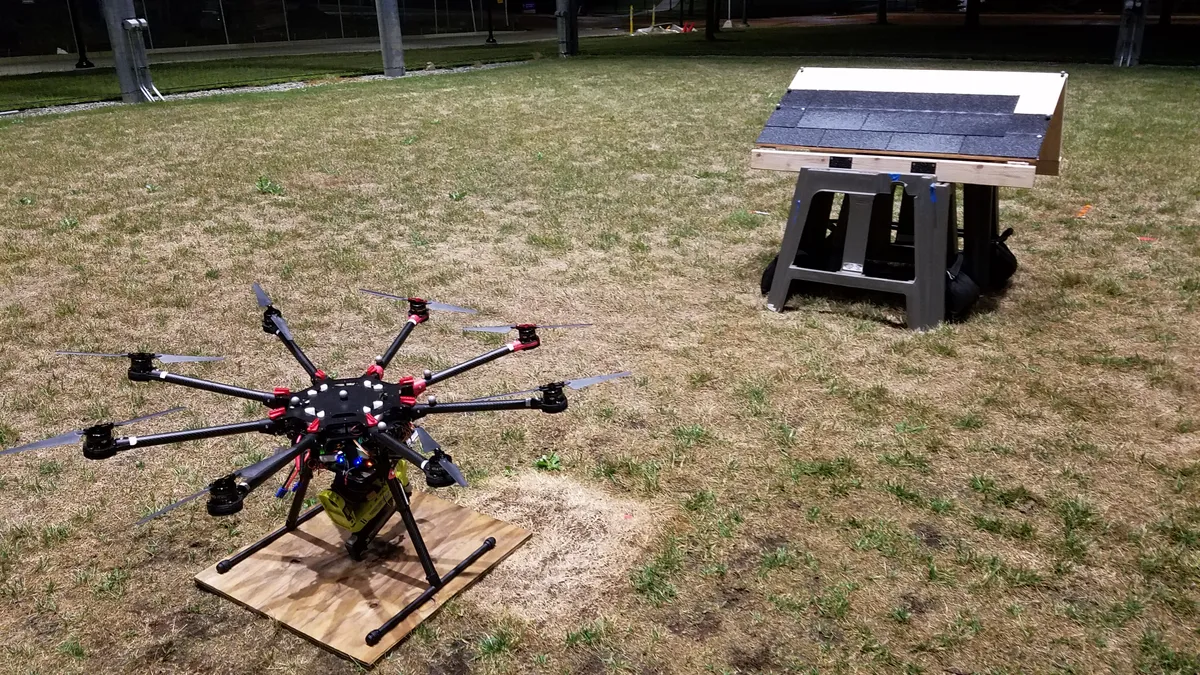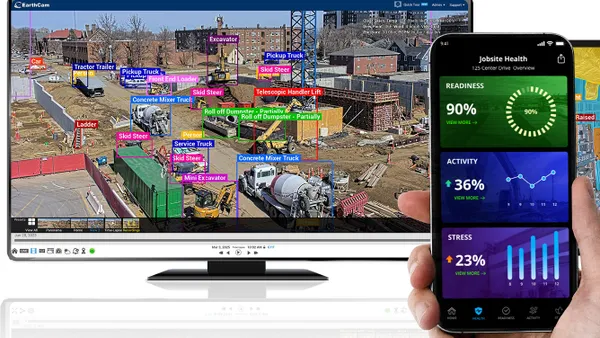Dive Brief
- The University of Michigan has unveiled autonomous drone software designed to allow drones to nail roof shingles. The drone add-on, powered by the technology, is capable of finding points and nailing shingles to a surface without a human actively controlling it.
- Ella Atkins, professor of aerospace engineering and robotics at UM, said she thinks drone usage should naturally progress from surveillance and inspection to performing tasks, especially in dangerous environments.
- The university opened in March 2018 a 9,600 square-foot open-air lab, called M-Air, to test autonomous drones. The roofing drone was among the projects named when the facility opened.
Dive Insight
For the time being, a roofing drone is slow compared to human workers, and takes time to fly upward, generate force to nail down shingles, and navigate to the next point. The UM team has identified changes that need to be made to improve the technology and make it more practical.
The drone operates on battery power, and can only work for about 10 minutes at a time. Other configurations that developers have considered, such as wiring the drone to a tethered power source, would allow it to work for unlimited amounts of time, but could restrict its range.
Atkins said she wants to begin pushing drones from inspecting bridges, buildings and railroads to physically interacting with their environment. Nailing shingles across a roof can be an arduous undertaking, but one nail at a time is a straightforward enough task that Atkins said her team can teach a drone.
Following a promotional video released by UM showing the drone working in the M-Air facility (see below), Atkins said she received suggestions from the roofing and construction communities, including using the drones to inspect for insect infestations by lifting shingles and observing what's underneath. The M-Air facility is open-air with netting, which allows the drone to operate under realistic weather conditions while still in a contained environment.
Drones in commercial use could be among the next step in development, but Atkins noted that, unlike on residential jobs in which the airspace overhead is part of a property owner's backyard, on larger projects, they would likely have to comply with Federal Aviation Administration (FAA) guidelines.
Atkins is working to upgrade the technology. For example, the number of cameras used for the initial promotional video was more than necessary, and will be reduced with future models. She is also working toward other physical applications that can be performed by the drone, but declined to share more details.














